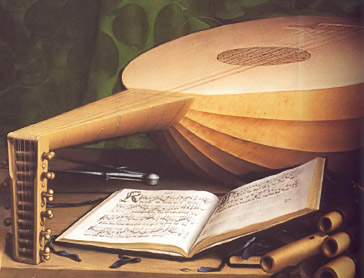
LUTE CAMERATA
LEVEL ONE
home
Level one: A good sound. Know what they knew, and practice. Tuning. Simple pieces, basic technique. Beginning notation. Throw away your solo CDs.
Level two: books of songs; simple scores, two clefs. Jack & Joan. Simple pieces and songs from both Tab and keyboard notation. The grand rotation.
Level three: basic singing, basic sight-reading; intermediate musicianship.
Level Four: The art of accompanying. Ensemble skills. Medium to high difficulty part songs.
Level five: the great solos and real renaissance ornaments; complex scores, clefs. Different Tab versions, singing from TAB. Arranging. The art of orchestra playing. Advanced rhythms such as late 14th century music and pieces by Tye and Baldwin.
Level Six: True professional, thorough knowledge of the middle ages, renaissance and baroque. All clefs. Al scores. All solos. All songs.
UNDER CONSTRUCTION Pages to finished August 07 |
As the years roll by, I often here the phrase, in one transformation or another, that so and so is a great teacher, even though they can't play their way out of a paper bag. Such are their powers of persuasion that these dedicated non-players convince people that could at one time play. There are exceptions, of course, I myself have had a number of injuries and one day I'll quit. But I won't claim I can teach. Rule number one: study with professionals. If you think you have tension problems, read a book or ask the professionals what they do. The complete removal of tension results in jello. Rule number two: rotate your teachers. I and many of my professional colleagues insist on rotation. It is the only system that works, and it is the best way to prevent becoming a clone. Rotating teachers immediately build your professional resume. When the time comes for you to presnt your resume and there is nothing on it, you won't get the gig. If there is only one name on it it will look like you don't get out much. Consider for a moment the track record of teachers. I estimate it at about three percent, perhaps even six percent. Only a tiny fraction of the students will go on to be professionals, even in a limited contex. And those students would have made it with no teacher, How many professional lute players are there? Very few, but there are now a lot of jobs. Find the professionals. |